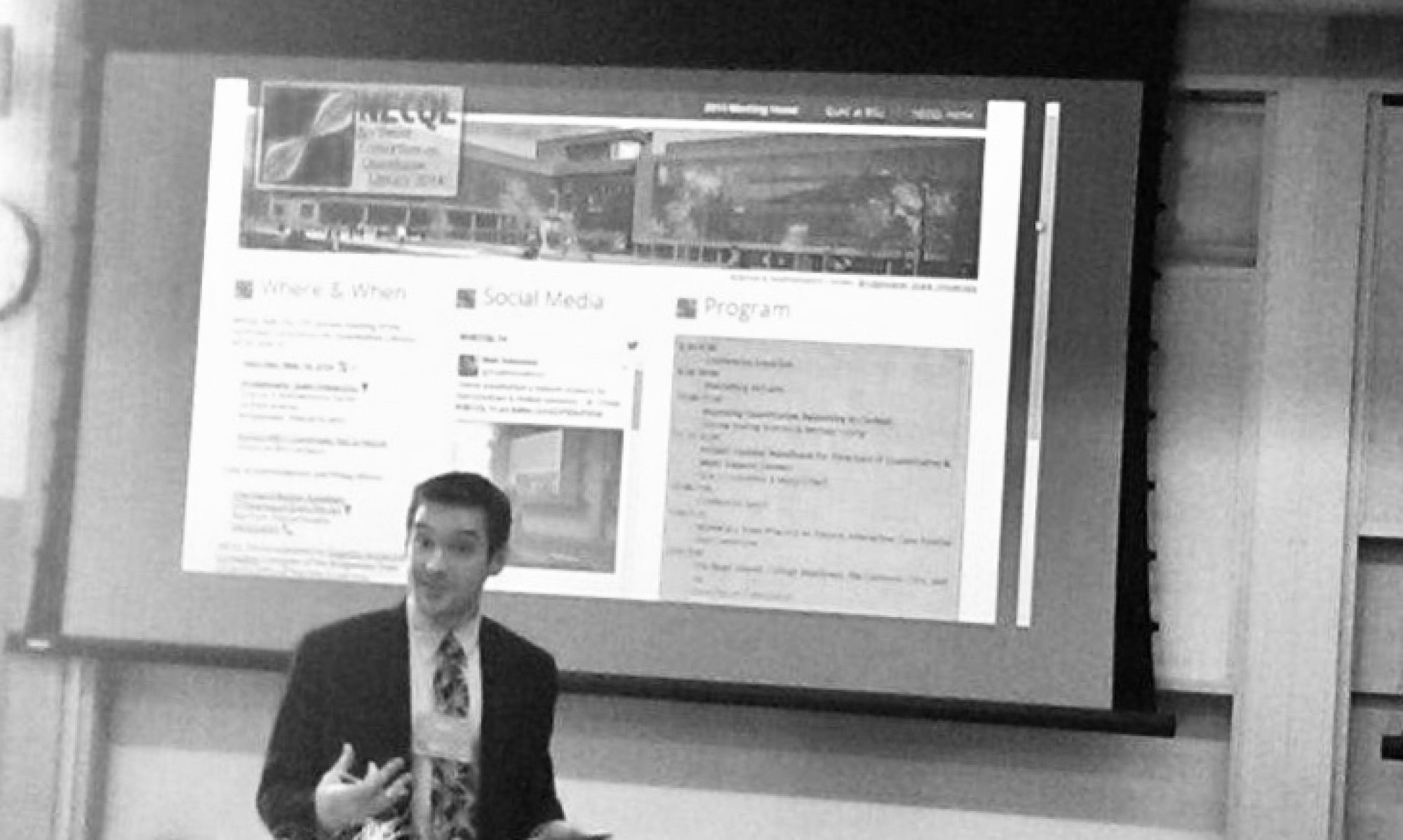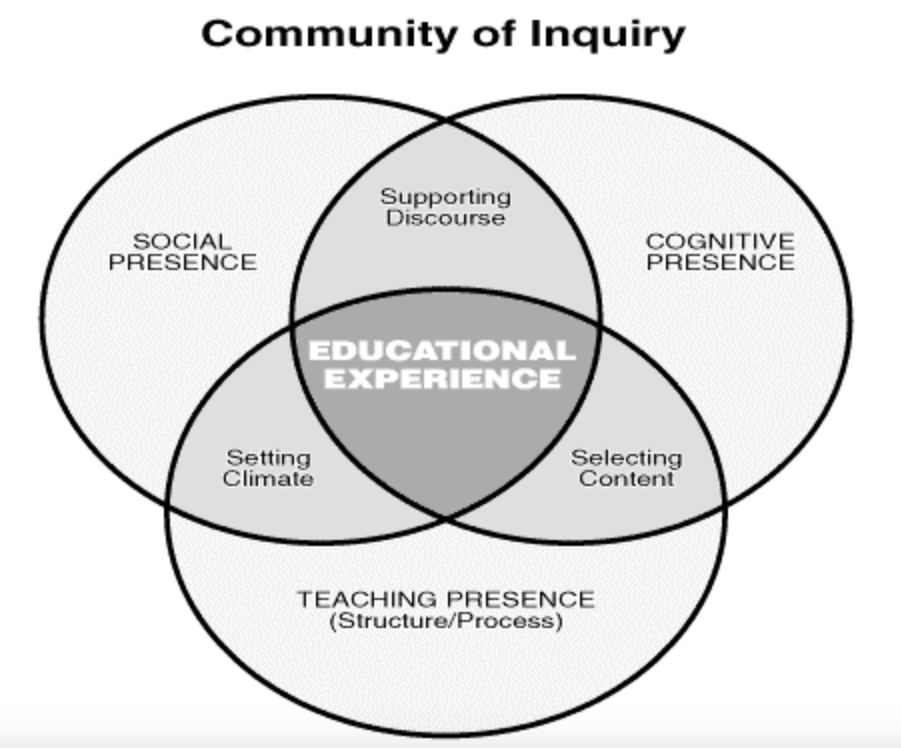The next time I teach a web hybrid course, I want it to be a great online course with the meetings as a bonus (rather than a great face to face course with web content as a bonus).
I’ve been thinking a lot about the Community of Inquiry (CoI) model of online learning during the #HumanMOOC course on humanizing online instruction. The model (Garrison, Anderson, and Archer 2000) positions student learning as a function of three interrelated forms of presence in an online environment:
For me,
- Teaching presence means making myself an active part of the course for all students. The folklore on my campus is that many students in online courses don’t even know who their professor is. On the internet, it could be anyone. A dog. A robot. If I’m doing my job as an instructor, it shouldn’t be different from my job as a face-to-face instructor: teach. Create conditions for learning, guide students through the process of learning with feedback, and assess whether learning has happened. These are hard to do face to face, just as they’re hard to do online, but no more or less important. This helps students to know I’m engaged, which is necessary (though not sufficient) for them to engage.
- Social presence means helping students to connect with one another and cultivate a sense of belonging in the online environment. Online learning, like in-person learning, can only work so well when it’s hub-and-spoke, with each student interacting with me and not with each other. (It also centers me as the authority in the class, which I need my students to do less.) So I need to use my teaching presence to create opportunities to build social presence too: by initiating (and requiring, and (!) being active moderating) threaded discussions, but also by exploring multimedia tools such as the nifty Flipgrid to give students space to interact through short video clips. I could see these videos as both opportunities for students to reflect on their learning, and to record student-voice “how-to” tips on a topic to help their classmates in their study process.
- Cognitive presence, the topic of this week, is where the higher-order learning happens. But insofar as students struggle to be cognitively present in face-to-face classes, especially those that meet before 10:00 in the morning, I would expect it’s even more of a struggle for them to be cognitively present in an online learning environment.
I wonder whether trying to do higher-order thinking in an online class is like trying to do physics homework at a rock concert. Distractions are everywhere, and the milieu isn’t designed for “system-2” engagement of higher cognitive function. (Kahneman, 2011) The internet, like the rock concert, is fundamentally a vehicle for dopamine delivery, not deep discourse.
But there is hope, as Peter Shea reports in today’s HumanMOOC webinar on cognitive presence:
He and his team did a quantitative content analysis on all (tens of thousands) student interactions in an online course and connected them with measures of teaching, social, and cognitive presence, and was able to describe the relationships between these forms of presence using a structural equation model and CHAID (Chi-square automatic interaction detection) tests to show that students who were most cognitively present in an online course were those who:
- Felt most comfortable contributing to online class discussion (social presence), who in turn
- Most felt that the instructor helped keep those discussions focused on relevant course concepts (teaching presence).
Likewise, the most cognitively present students were also those who
- Most felt as though they got to know other students and felt a sense of belonging (social presence)
- (I’m sure this doesn’t happen by accident either, and that a measure of teaching presence, such as the requirement to interact with other students and the instructor’s ability to communicate approachability, availability, and sensitivity to student needs likely explains this.)
So the moral of the story in my mind is that students will “bring their brains” to an online course that makes them feel connected to one another, positive, and engaged in focused, topical discussions of course content. I like to think I do well enough with the connectedness and positivity — encouragement of social presence — in my courses, but what I most want to work on is my creation of, and especially my presence in, discussions of course material. I’ll be thinking a lot about how to do that in ways that will work for my students as well, as next semester approaches.
Garrison, D. R., Anderson, T., & Archer, W. (2000). Critical inquiry in a text-based environment: Computer conferencing in higher education. The Internet and Higher Education, 2(2), 87-105.
Kahneman, D. (2011). Thinking, fast and slow. Macmillan.


One Reply to “Bringing Their Brains”